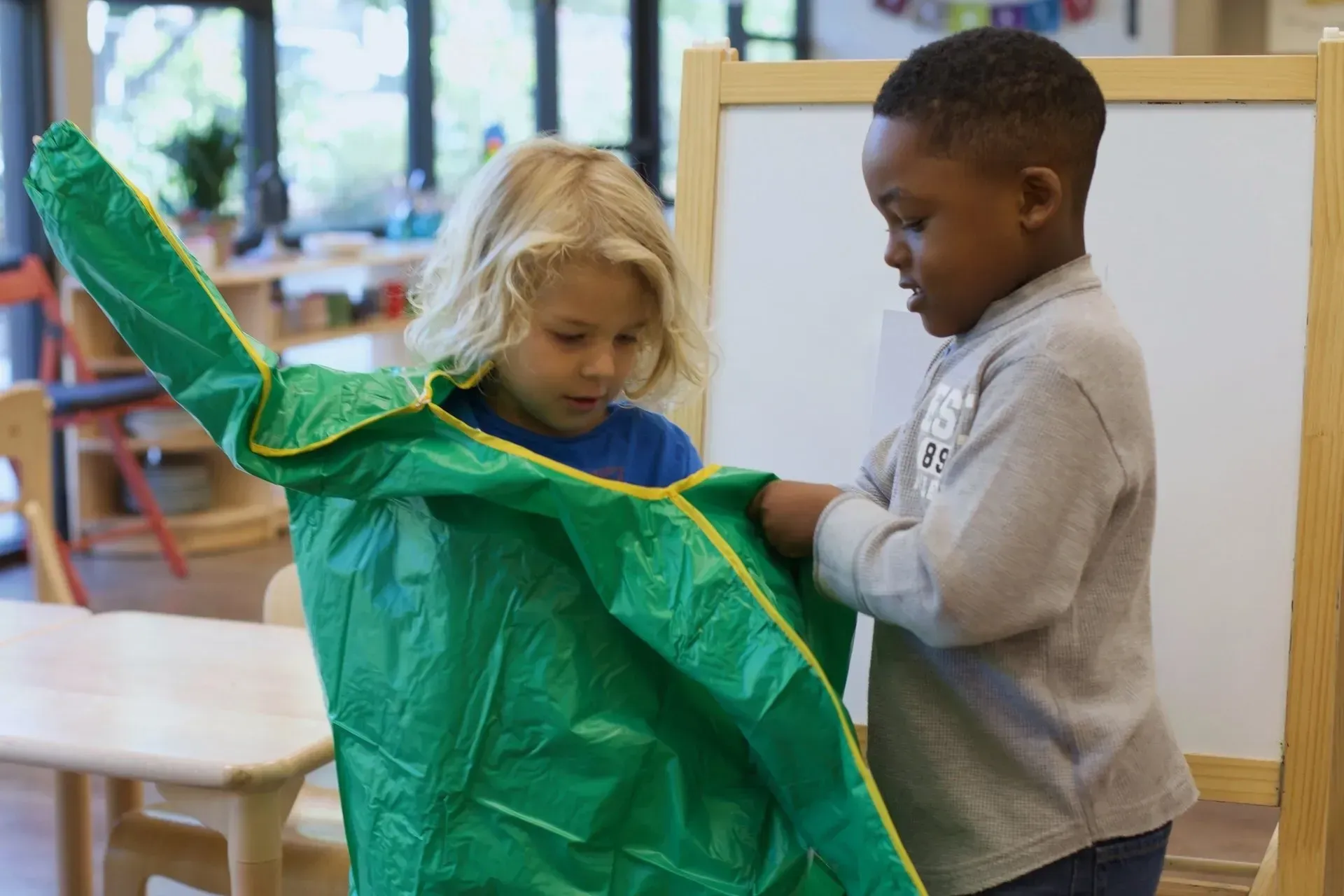
You already know that Montessori is different from conventional education methods. You may have heard some folks rave about the benefits while others share their doubts. The truth is, there are a lot of differences. Montessori education is nothing like the type of schooling that most children experience – including us adults when we were children.
Understanding the differences can help you decide whether or not Montessori might be a good fit for your family. We invite you to read the comparison below, then come see for yourself. Visiting our classroom environments in person is the very best way to understand our approach.
When viewing this chart please keep two important points in mind:
- All schools are different. There is no one standard for conventional or Montessori educational settings. The statements below are generalizations, thought widely considered accurate.
- You may see similar charts like this floating around the internet. Ours is different in that we aim to provide factual, observational comparisons. The intention is not to convince you that Montessori is somehow better, but to assist you in your decision-making process. We do, of course, believe in the validity of our methods, but we fully acknowledge that Montessori is not the best fit for every family.
Montessori
Mixed Age Groupings
Montessori classrooms utilize a multi-age
model. Ranges are typically 3-6, 6-9, and 9-12.
Individualized Instruction
Teachers are trained to guide children
through a set curriculum, however each child sets their own pace and is able to more deeply explore areas of interest.
Focus on Intrinsic Motivation
Montessori educators believe that children
have an innate desire to learn and that the
learning itself is a reward. Progress reports
typically include teacher narratives and
information on skills that have been
presented, practiced, and mastered.
Physical Autonomy
Montessori environments are set up so that children may safely and independently use the toilet, eat a snack and get a drink of water when their bodies signal the need and without the permission of an adult.
One Teacher for Three Years
As a result of multi-age class groupings,
children remain with the same teacher for
three years.
Variety of Seating Options
Children may choose to sit and work alone or with others, at a table or on a carpeted floor. They may move throughout the day to seek out different seating options.
Select Art on Walls
Framed prints or artwork are hung on
classroom walls. Select, specific curriculum materials (such as timelines) that may be seen in elementary and adolescent environments.
Natural Materials
Montessori classrooms emphasize the use of wood, glass, and natural fibers. Plastic is
avoided whenever possible.
Hands-On Materials
Specially designed hands-on materials are
used in Montessori classrooms. As children
get older (throughout the elementary years), they rely increasingly on pencil and paper, typically using notebooks. There are generally no textbooks, workbooks, or worksheets.
Formative Assessment
Montessori teachers rely heavily on formative assessment, which entails observing a child as they work. During lessons this often means staying flexible enough to change course depending on the child’s understanding of the skill.
Conventional
Single Year Chronological Grade Levels
In conventional schools, children generally
move to a new grade and class each year.
Group Paced Instruction with Elements of Differentiation
Teachers often teach skills to the whole class at once and pacing does not allow for extra support or challenge. In recent years efforts are being made in some settings to find ways to provide elements of differentiated instruction.
Use of Rewards and Punishments
Conventional schooling typically takes the
approach that external rewards are
motivators. Children receive grades on their report cards, stickers or stamps on papers deemed “good”, and class celebrations for positive behavior.
Adult Permission Required to Fulfill Certain Needs
In order to maintain order within a class that largely does the same activities at the same time, children have scheduled snack/restroom use times or they may ask an adult for permission.
New Teacher Each Year
In typical conventional schools, children move on to a new classroom with a new teacher each school year.
Desks with Chairs
Most conventional classrooms utilize
individual desks with chairs. There are many configurations; some teachers rely on the traditional row formation, while others use desks to form small groups, a horseshoe shape, or other setups.
Environmental Text
Many conventional educators hang reference materials on the walls of their classrooms, as well as motivational and/or decorative posters.
Variety of Materials
A variety of materials can be found in
conventional classrooms, with an emphasis on paper and plastic.
Textbooks, Worksheets, and Manipulatives
A variety of teaching tools are used, including textbooks, workbooks, and photocopied worksheets. In the last two decades, conventional schools are finding ways to include the use of manipulative materials, especially in math and science.
Summative Assessment
Teachers in conventional schools rely on a
variety of assessment methods, but tend to lean heavily on summative assessment.
Examples include tests, quizzes, and graded assignments. Summative assessments place a value on student understanding at a particular point in time.



